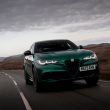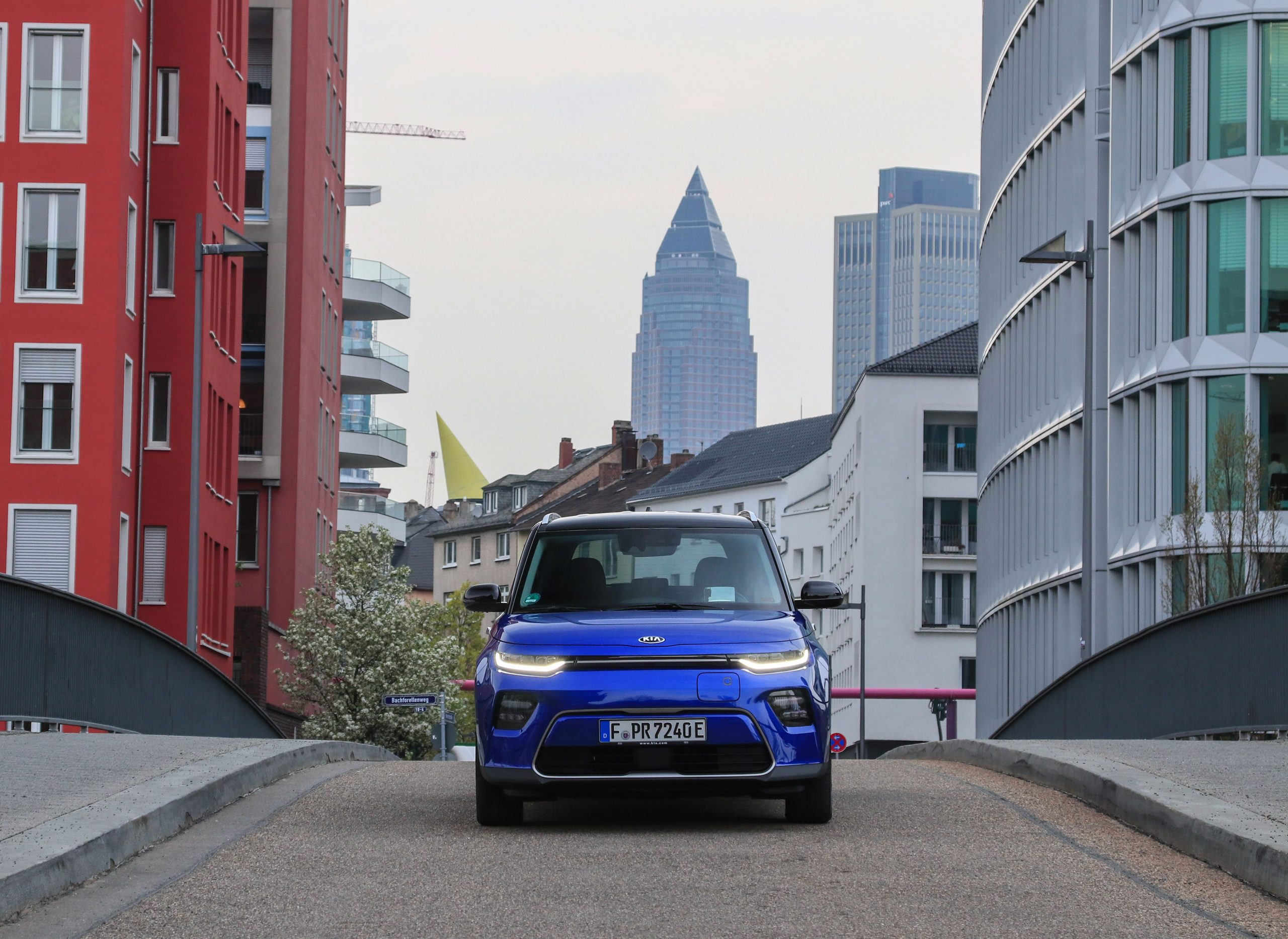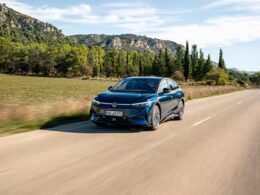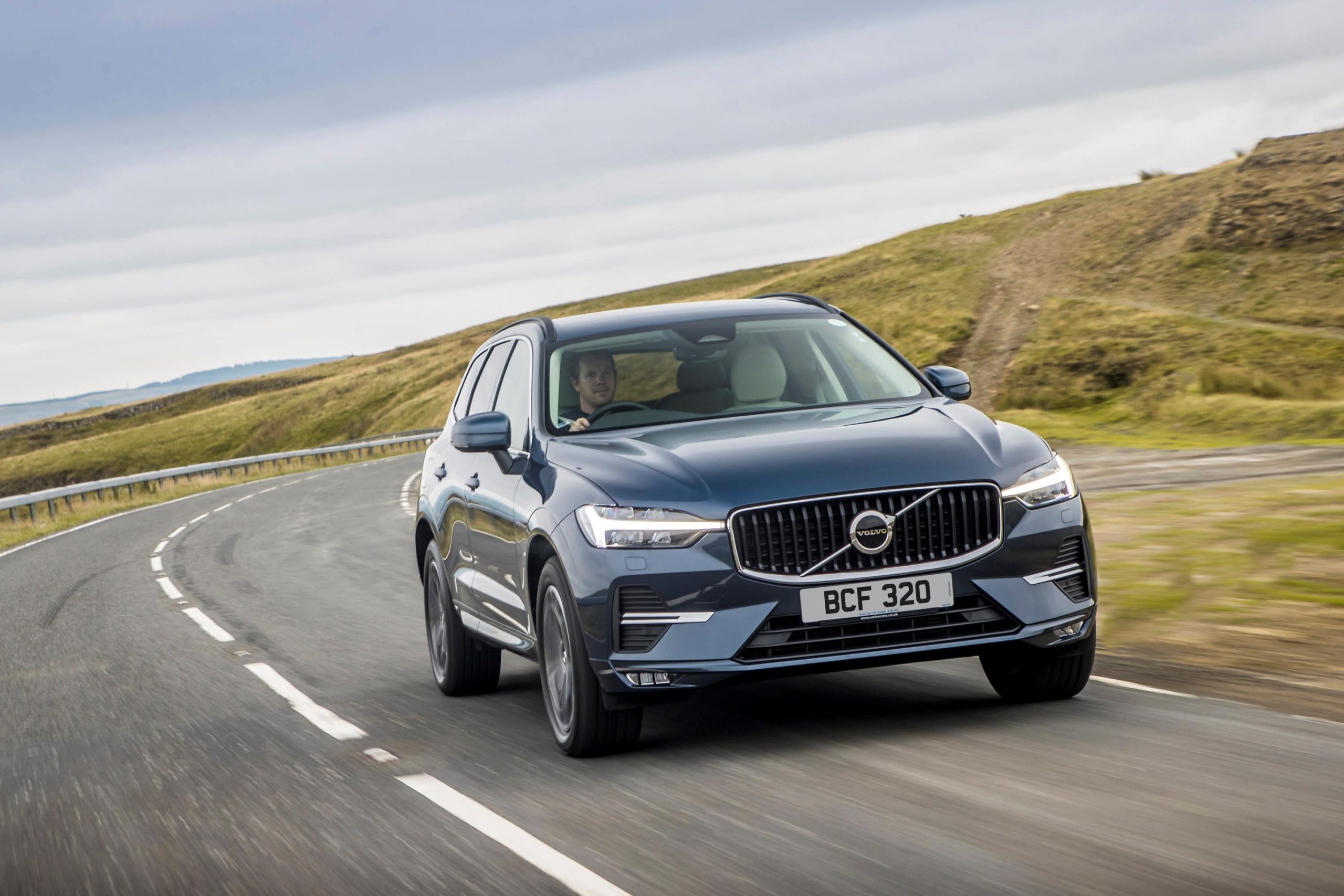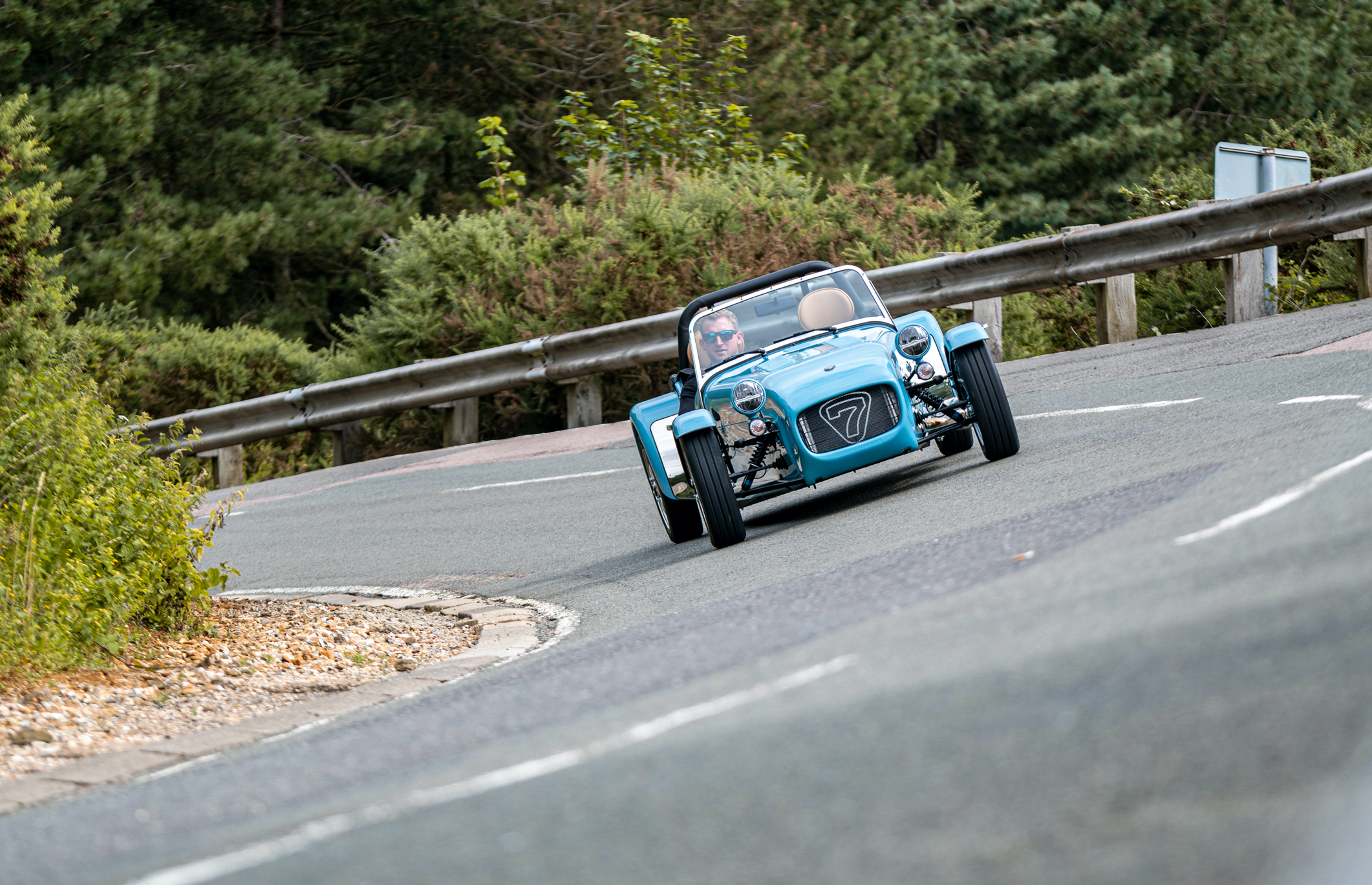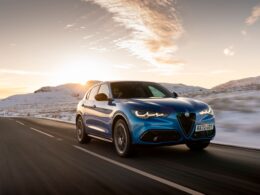It may have a boxy design, but the new Kia e-Soul certainly thinks outside the box, says Tonio Darmanin
From a technical point of view, I felt the previous electric Soul was one of the more advanced EVs to hit the market at the time. As I flew into Frankfurt for the day to test-drive the all new version of this model, my expectations where quite high.
The new Kia e-Soul brings long-range, zero-emissions power to the urban crossover class. In its third generation, Kia’s pioneering urban crossover – and its third globally-sold electric car – has become more distinctive, dynamic and innovative than ever.
While the e-Soul embraces the iconic design and playful character of its predecessors, it is powered in Europe exclusively by electric energy, with a choice of two long-range, zero-emissions powertrains. The new-generation battery packs powering the new e-Soul are up to 30 per cent more energy efficient than Europe’s current best-selling electric vehicle.
The e-Soul retains the strengths that have characterised earlier generations of the model, offering outstanding value for money, a roomy interior for five occupants, and high levels of space and versatility. Like all Kia models, the new e-Soul is sold as standard in Europe with Kia’s quality promise: an unrivalled seven-year, 150,000-kilometre warranty, which also covers the car’s electric motor and battery pack.
Every exterior panel on the e-Soul is new, yet it remains instantly recognisable by staying true to its boxy origins. Its urban crossover design has been enhanced with sharp full-LED headlamps integrated into the upper ‘brow’, which extends across the front of the 1,800-mm wide car. The front and rear bumpers, and a solid panel in place of a grille, give it a smooth, aerodynamic appearance. The charging socket is housed behind a small panel at the front of the car. Strake-style LED fog lamps beneath the headlights replace the round lamps found on the previous Soul EV.
In profile, the e-Soul’s boxy silhouette remains clear, yet subtle adjustments to its proportions and details give the car a more confident appearance. At 4,195mm in length, the new e-Soul is 55mm longer than the car it replaces – with a 2,600mm wheelbase (+30mm) and a 15mm longer front overhang. This effect is enhanced visually by the newly-designed rear pillar and shape of its glasshouse. The windows taper towards the rear of the car, with a fin-shaped rear pillar replacing what was previously a sharp angle at the base of the rear windows.
The shape of the glasshouse draws the eyes along the side of the car as the bodywork kicks up towards the roof, ending in a matte black panel bearing the Soul name. This effectively balances the visual ‘weight’ of the rear with the longer front end. The e-Soul is finished with a unique five-spoke 17-inch alloy wheel design.
At the rear, the ‘island’ of bodywork in the tailgate remains. Surrounded by gloss black, this panel takes on a more rounded, modern shape for the new model, and sits atop restyled rear bumpers. It is parenthesised by bold new wraparound LED combination lamps, with sharper trailing edges contributing to improved aerodynamic performance.
The new e-Soul is available in a choice of seven single-tone paint finishes and seven two-tone combinations, mixing bright body colours with metallic shades for the roof and door mirror caps.
Maltese customers can also specify an optional SUV pack, which elevates the design of the e-Soul with the addition of bolder wheel arch and side sill cladding, as well as a skid plate on the base of the front bumpers.
Since the Soul’s inception, music has been an overarching theme behind its design. In its third generation, this continues to be a core attribute of the car’s persona. For the new model, designers and engineers have turned up the volume on the interior, drawing inspiration from the visualisation of sound.
The e-Soul’s interior space is finished with acoustic-inspired shapes and textures, creating a full sensory experience. The new Soul retains the signature ‘tweeter’ speakers which bookend the dashboard, a feature of the previous-generation Soul which exemplified the car’s combination of cool design and ultimate functionality.
As vibrant inside as out, the e-Soul’s cabin can be finished in a range of single- or two-tone colour schemes, with a choice of fabric and synthetic or real leather. The cabin is fitted with an optional sound mood lighting system, emitting soft light from panels in the doors. This also includes a unique 3D-patterned surface on the upper door panels. The sound mood lighting system pulses in time the beat of music playing through the audio system, with eight customisable colours and six themes illuminating the cabin.
The car is also available with a wireless phone charger at the base of the dashboard, heated and ventilated front seats, and a premium Harman Kardon sound system. An available Head-Up Display system unobtrusively projects relevant driving information on to a small glass panel behind the steering wheel – such as turn-by-turn navigation directions and vehicle speed information.
The new e-Soul will be sold in Europe exclusively as an electric vehicle, with a choice of two fully-electric, zero-emission powertrains to meet the needs and budgets of different customers.
Drivers have a choice of long-range (64kWh) and standard-range (39.2kWh) powertrains. Whichever version a buyer chooses, the e-Soul remains as silent as its predecessor, the outgoing Soul EV, while offering vastly improved range. On-road performance is also enhanced, with significantly more powerful electric motors providing 395Nm of torque.
Furthermore, Kia’s new-generation lithium-ion polymer battery packs offer greater energy capacity than those of many other electric vehicles, regardless of price. Cell energy density of 250Wh/kg, achieved through new cell chemistry, enable the cells to store 25 per cent more energy within a defined volume than those of the 200Wh/kg battery pack in the outgoing Soul EV. This has enabled Kia to keep the battery pack as compact and lightweight as possible, while taking a huge leap in the car’s zero-emissions driving range compared to its predecessor and other electric vehicles on the market.
“The new-generation battery packs powering the new e-Soul are up to 30 per cent more efficient than Europe’s current best-selling electric vehicle”
The long-range 64kWh battery pack is paired with a 150kW electric motor, making it 84 per cent more powerful than the outgoing Soul EV (up from 81.4kW). The long-range 64kWh e-Soul can travel up to 452km on a single charge on the WLTP combined cycle, with energy consumption of just 157Wh/km. On the WLTP urban cycle, energy consumption for the long-range e-Soul is as low as 109Wh/km.
With the powertrain’s maximum 395Nm torque available from a standstill, the long-range 64kWh e-Soul will accelerate from 0-to-100km/h in just 7.9 seconds.
The standard-range 39.2kWh battery pack powers an efficient 100kW electric motor. With peak torque of 395Nm, and 23 per cent more power than the outgoing Soul EV, the significantly improved efficiency of the battery enables the standard-range e-Soul to travel up to 276 kilometres on a single charge. Energy efficiency is rated at 156Wh, 25 per cent more efficient than the best-selling electric car in Europe – making it one of the most energy-efficient electric vehicles in the world.
A suite of advanced features enhance safety, improve the driving experience and provide ease of operation and ownership. Furthermore, the new model is the first Kia in Europe to offer the brand’s innovative UVO Connect telematics system.
The 10.25-inch touchscreen navigation system features Bluetooth multi-connection as standard, enabling occupants to connect two mobile devices at once, as well as Apple CarPlay and Android Auto. Its advanced split-screen functionality lets users control or monitor different vehicle features at the same time, customising the screen with a series of different widgets.
The widescreen in the centre of the dashboard is complemented by a seven-inch TFT-LCD Supervision instrument cluster, displaying essential driving information to the driver.
The new e-Soul is the first generation of the Soul to feature fully-independent multi-link rear suspension. This replaces the torsion beam rear axle on first- and second-generation models, making the car more engaging, responsive and comfortable to drive. The suspension is tuned to deliver high stability and engaging handling responses, and filter out small vibrations at higher speeds when travelling over poor surfaces.
The flat battery pack is located beneath the cabin, giving the e-Soul a centre of gravity more akin to that of a sedan or a hatchback. Combined with a slightly wider stance than its predecessor, the e-Soul provides maximum stability and driving enjoyment on winding roads, with minimal body-roll under cornering. The battery pack’s location means the majority of the powertrain’s weight is located between the axles, enabling a relatively equal distribution of weight. This helps to prevent understeer and enables linear and predictable handling.
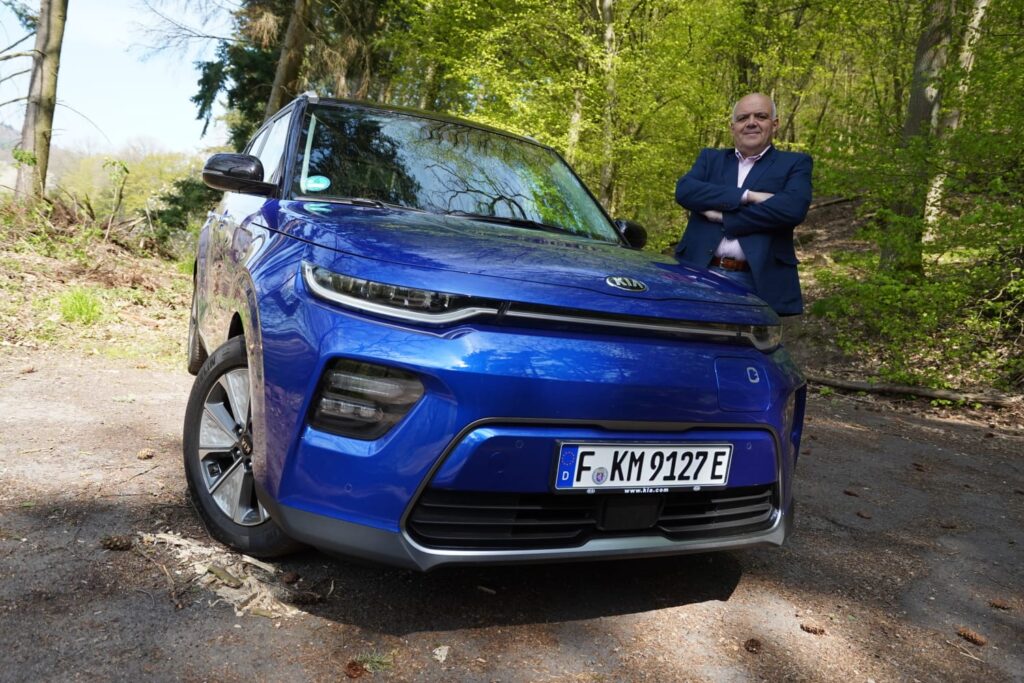
In addition, the e-Soul’s drive mode select system lets drivers adapt the car to their preferred style or the road conditions. Drivers can choose from ‘Normal’, ‘Eco’, Eco+’ and ‘Sport’ mode.
A range of passive and active safety systems ensure that occupants remain as well protected as possible on every journey. Kia’s Advanced Driver Assistance Systems (ADAS) help to reduce many of the inherent hazards and stresses of driving.
Love or hate its styling, the new eSoul has once again established itself as one of the more technologically advanced and refined EVs one can find on the market today. It does exactly what it says on the label without any effort or drama and with the extended range and spirited performance, it is definitely a feasible option.



